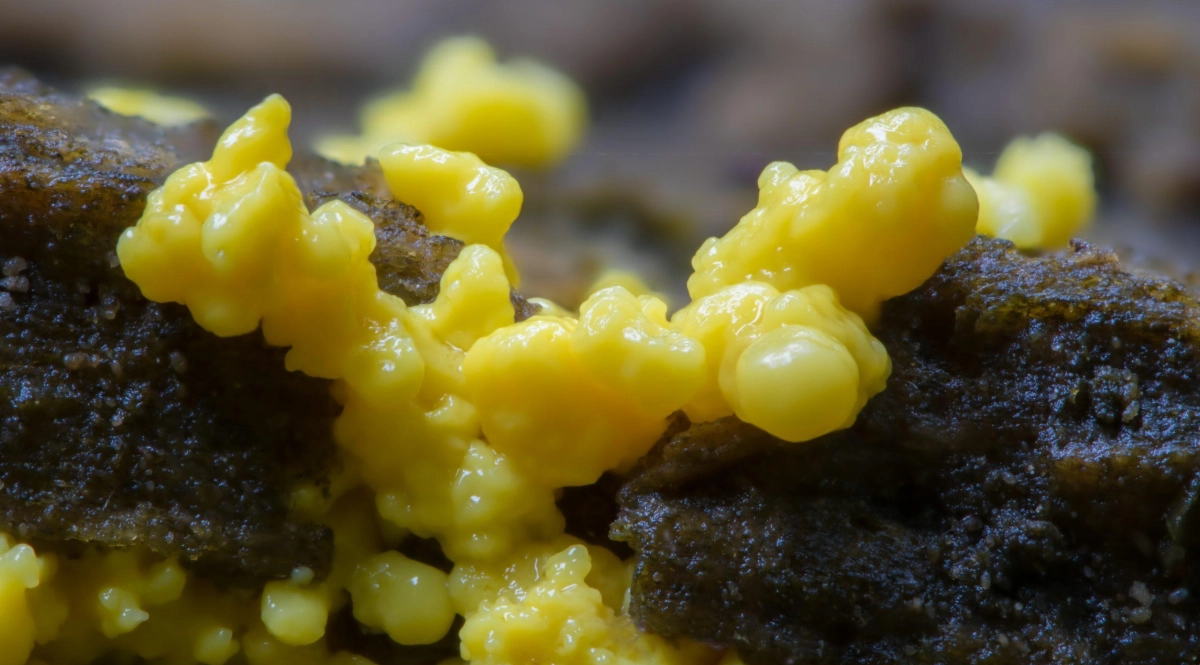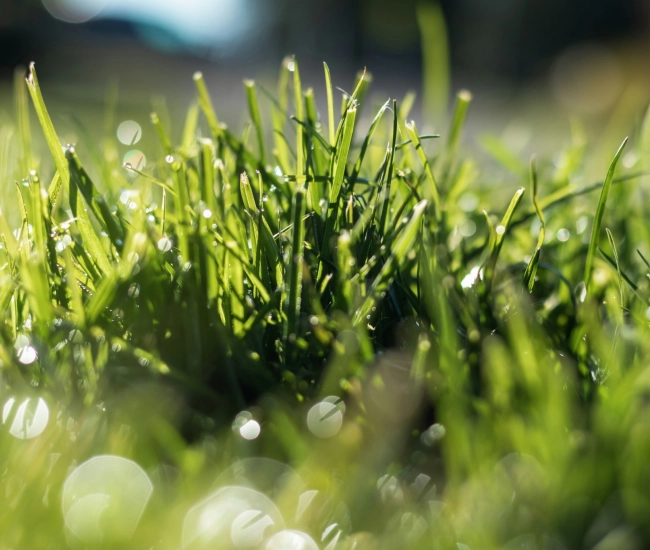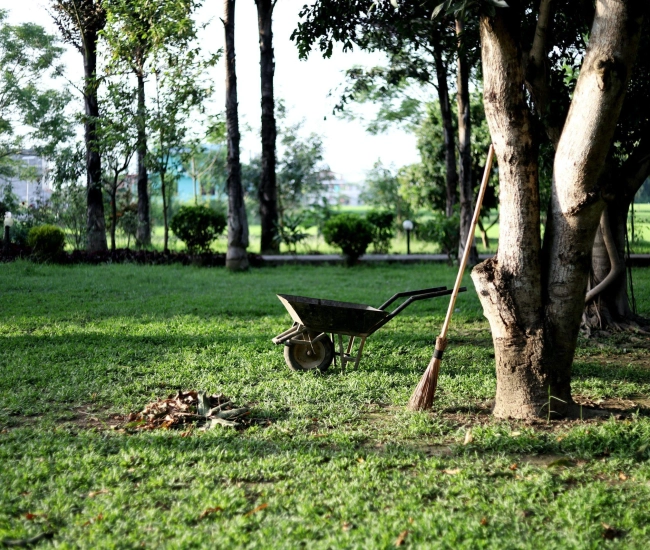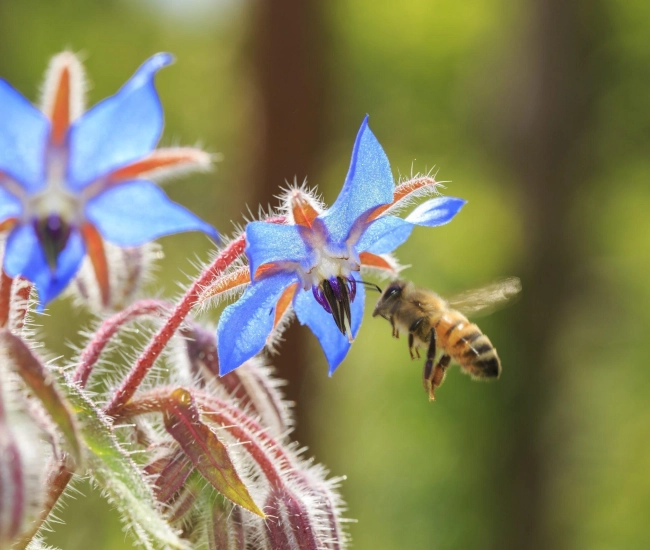
The Blob... that funny name might ring a bell. An old pseudo-horror film from the late 1950s, remade in 1988, features a viscous and shapeless substance that feeds on humans and engulfs cities to survive: The Blob. On a much smaller scale and without any malice or danger to anyone, this living being truly exists and fascinates scientists all over the world. Neither animal, nor plant, nor bacteria, nor even fungus, the blob is a unicellular organism that naturally lives in forests and undergrowth and can even be found in gardens, in occasionally damp and shady places. Harmless to your plants, it is even said that without it, there would be no more plants.
What is the blob?
White to bright yellow in color, the blob looks like a fungus without actually being one, it moves and feeds without having a mouth or legs, and it learns and reacts without having neurons... Quite impressive for a somewhat vague organism that resembles dog vomit – that's its other little name: dog vomit!
The blob is composed of a single cell with multiple nuclei that allow it to fragment and regenerate. Capable of going into hibernation mode (called sclerotia) when conditions are unfavorable, too hot or too dry, and coming back to life – and even younger – when temperatures are milder and it receives a bit of water, the blob is almost indestructible.
What is the purpose of the blob?
To survive, grow, and reproduce, the blob feeds on spores, fungi, and microorganisms. The waste it produces, in turn, serves to nourish plants and fungi, contributing to increased microbial and active life in the soil. Without it, it is even said that there would be no more plants. It's a recycling champion! Several researchers are studying its potential for soil decontamination or waste recycling. The blob has lived freely for millennia but has long gone unnoticed because it resembles nothing else.
Why are we interested in the blob?
The blob fascinates scientists because it is unique and incomparable to any other living being. In addition to everything we have already mentioned, the blob, which, let's remember, has no neurons, has the ability to learn. Indeed, if obstacles are placed between it and the food it desires, it will quickly find a way to get there. Even more interesting, when two blobs come into contact, they merge and share their learnings. Thus, a so-called naive blob, which has never encountered the obstacle, will know what and how to do to overcome it.
In the event of a cut or separation, the entire blob system reorganizes in no time. You can take a blob and separate it into several mini-blobs that will continue their lives peacefully. Moreover, when placed in a maze with food at each end, the blob quickly finds the fastest way to reach its goal. Researchers have recreated the map of Japan where each city was covered with food. The blobs merged and established a circulation network even more efficient than that created by humans. Imagine if we could replicate this model in reality!
What to do if you have a blob in the garden?
Although rather unsightly, the blob is harmless to your plants. And since it is almost indestructible, it is better not to attempt the impossible! As it likes humidity, try to dry out the areas where it is located so that it goes dormant, making it easier to move. But beware, as soon as it comes into contact with moisture again, it will come back to life and since it moves at a speed of up to 4 cm/h, it might return... But no, don't worry! Among the great qualities we haven't mentioned yet, it secretes a substance that is repulsive to it in its path to avoid retracing its steps and going in circles... brilliant, this blob!
Tips and advice



